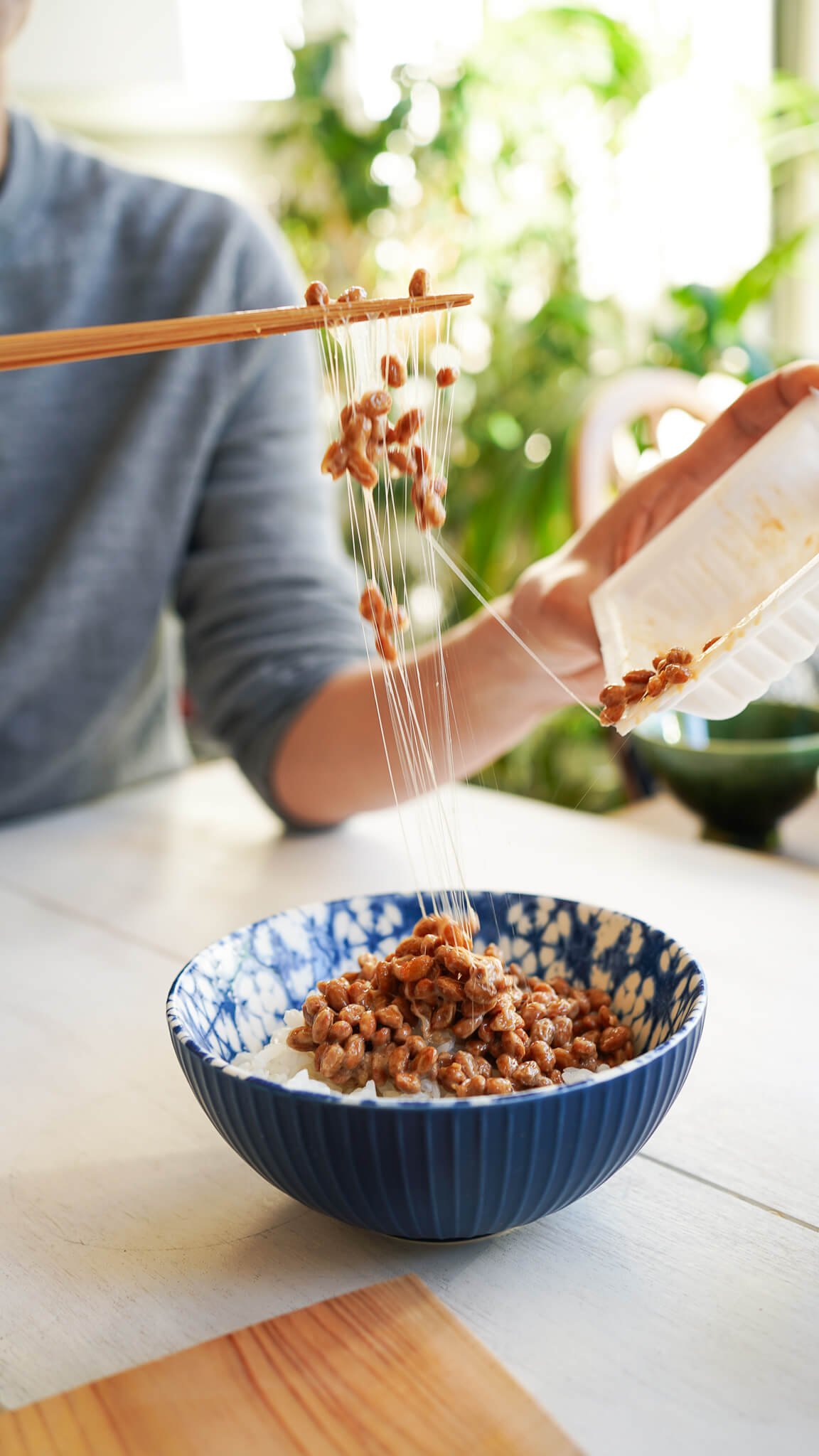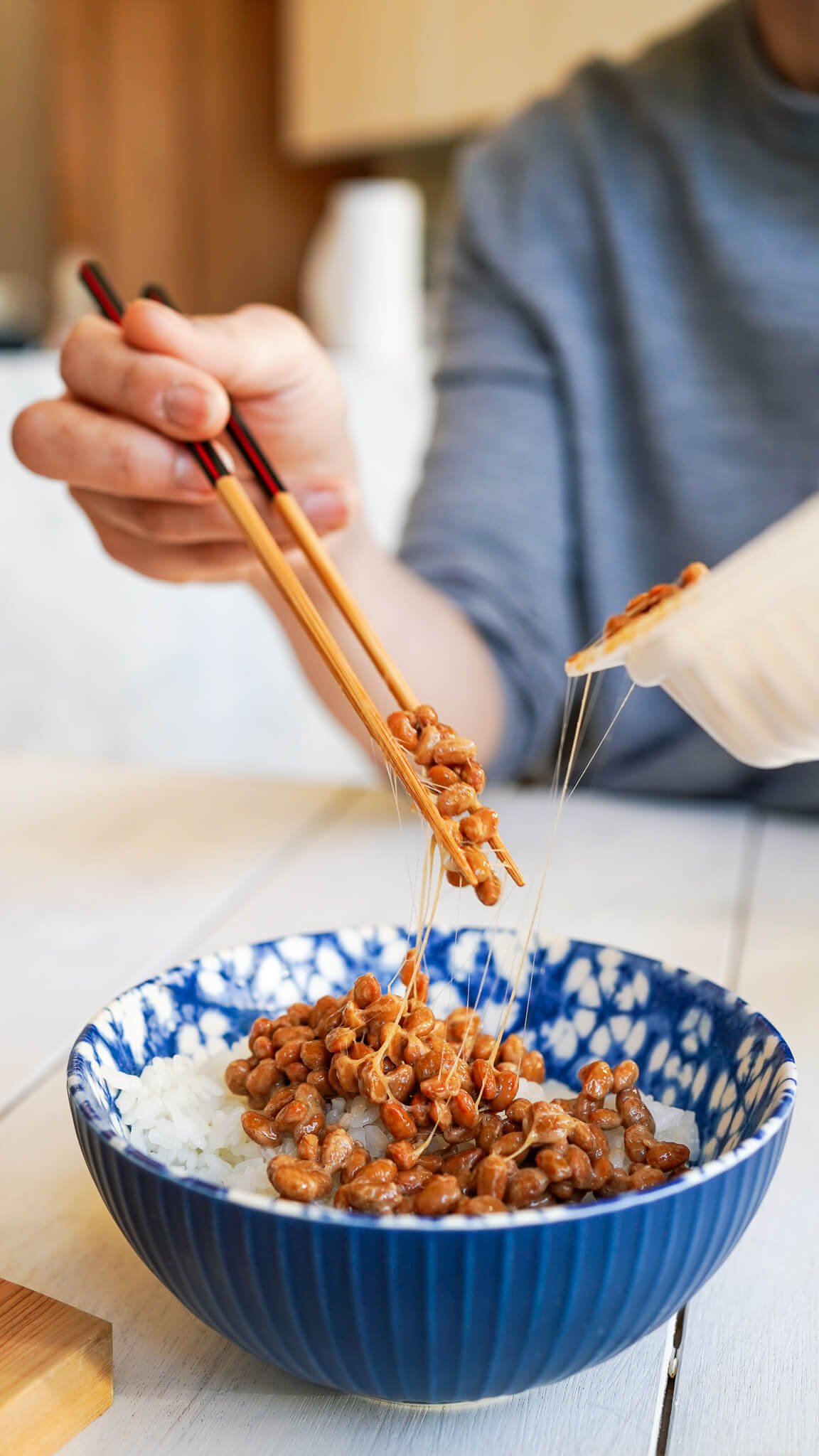Natto and Rice: 6 Ways to Enjoy Fermented Soybeans
Natto and rice is a traditional Japanese dish typically eaten for breakfast, it’s usually mixed with a raw egg and a dash of soy sauce. I also think of it as a perfect, easy to make, emergency food that’s packed with nutrients. Learn all about natto and how to prepare this healthy dish in six exciting ways.
Natto is quite a controversial food, even in Japan. You either love it or hate it — like marmite or stilton! People in Tokyo generally enjoy it but it’s much less popular in the Kansai region. In fact, I had a friend who joked that she and her husband divorced because he was from Kansai and would ask her to eat natto in the other room!
Natto is definitely a dish that people have strong opinions about, due to the sticky texture and ammonia-like smell. But if you like it for its rich flavour then you can also enjoy the many benefits of this superfood dish.
Japanese parents are always grateful when their children enjoy natto because it’s quick and easy to prepare, which is ideal when you just don’t have time to cook a meal. It also provides essential Vitamins K, B2, and E for your skin, and is a fantastic source of iron, fibre, and protein!
Natto is also believed to lower blood pressure and reduce cholesterol. For this reason, many people eat it, even if they don’t enjoy it. Thankfully, my daughter and husband love it so I always have a well-stocked freezer full of natto.
Being a fermented food, it is also full of probiotics and very healthy for your gut. As you know, I love to incorporate fermented food into my diet as much as possible with simple additions like this lemon koji seasoning, or even homemade miso. So natto is a regular staple in our house.
What is natto and where did it come from?
Natto is essentially soybeans that have been fermented under the right amount of heat and humidity, with added bacteria.
Natto has quite a mysterious history, but the story goes that it was discovered by accident in ancient northeast Japan by the samurai Hachiman Taro Yoshiie. He was carrying soybeans in his pack while travelling and it created the exact atmosphere that was needed to begin the fermentation process.
The bacteria which ferments natto (Bacillus natto) can be found anywhere — including in herbs and straw. As his beans were contained in a straw sack, the bacteria was present and the fermentation process created natto. He was so hungry that he chose to eat the beans in spite of how they looked, and found that they were delicious. A happy accident!
6 Natto Dishes to Try at Home
Luckily, natto is very easy to buy these days. It is perfect to bulk-buy since it freezes well. You will typically find it in the freezer at your local Asian store, at the Japan Centre, or even online. In Japan, you can even pick it up at convenience stores since it's so easy to prepare and perfect for busy people on the go.
To make your natto dish, you simply make steamed rice and add your beans and toppings. It is also easy to make a vegan version by skipping the raw egg.
I also included a natto hand roll in my book Sushi at Home, which really shows how creative you can get with this versatile dish!
I’ve included some of my favourite ways to serve natto below.














